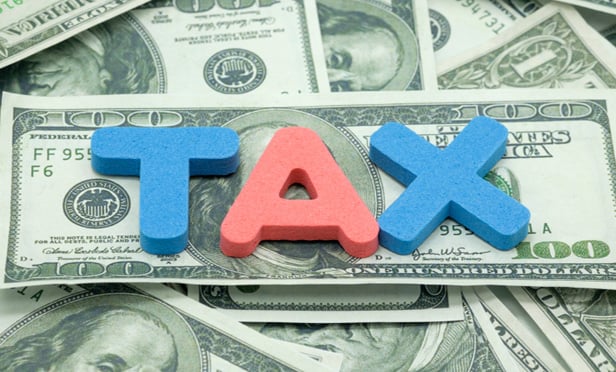Features

Ninth Circuit Focuses On Extrinsic Test In Ruling On Choreography Copyright
Reversing and remanding, the Ninth Circuit emphasized: "The district court's approach of reducing choreography to 'poses' is fundamentally at odds with the way we analyze copyright claims for other art forms, like musical compositions."
Features

Want to Get Your Attorneys More Engaged? Get Them In the Office
Law firm leaders are increasingly concerned with lack of engagement. With law firm demand down and office attendance policies in flux, many firms don't believe their workforce is optimally motivated and are struggling with disengagement. The concern is that psychological investment changes when professionals don't see co-workers in the office, making it easier to develop distance, and disconnect.
Features

Second Circuit Likely to Deliver Big Win for Commercial Shopping Center Lessor
The U.S. Court of Appeals for the Second Circuit, on remand from the Supreme Court, further remanded to the district court the key issue of whether the Chapter 11 debtor gave "adequate assurance of future performance of" a commercial real property shopping center lease "as required by the Bankruptcy Code after the debtor's assignment of its lease.
Features

Key Win Likely for Commercial Shopping Center Lessor In Second Circuit
The Second Circuit, on remand from the U.S. Supreme Court, further remanded to the district court the key issue of whether the Chapter 11 debtor gave "adequate assurance of future performance of" a commercial real property shopping center lease "as required by [Bankruptcy Code] §365(b)(3)(A)," after the debtor's assignment of its lease.
Features

When Is A Real Estate Instrument Filing Fee An Unauthorized Tax?
Litigation pending in the Suffolk County Supreme Court is challenging fees charged for tax map verifications on real estate instruments filed with the county clerk as unauthorized taxes.
Features

AI Is Attracting Antitrust Regulatory Scrutiny
While some jurisdictions are enacting or proposing AI-specific regulation, many existing regulatory frameworks apply to new technologies, including antitrust. Companies may experience different potential antitrust risks depending on the type of AI technology and their use of that technology.
Features

CA Bankruptcy Court Throws Regulatory Concerns Aside and Sides With Cannabis Business' Chapter 11 Plan
While this case does not fully open the courthouse doors to cannabis-related businesses and seemingly grants the bankruptcy courts a great deal of discretion when ruling on similar cases in the future, cannabis-related businesses may now have a roadmap to pursue reorganization.
Features

AI's Growing Impact On the Gaming Industry
The gaming and wagering sector has begun to cross paths with artificial intelligence technology in ways both predictable and unforeseen. As with other industries, AI technology inevitably has found its way into various components of the gaming experience. What is striking, however, is how AI is revolutionizing gaming for operators, regulators, suppliers and patrons alike.
Features

Adaptive Reuse of Vacant Office Buildings
While transforming existing buildings for alternative purposes is not a new concept, this article seeks to explore the feasibility of alternative repurposing options with a focus on pre-existing office buildings; namely, converting vacant office space into vertical farms or cannabis growth operations.
Columns & Departments

Real Property Law
Notice of Pendency Improper In Private Nuisance Action Incapacity and Undue Influence Challenge to Deed Fails Authority Entitled to Divert Surface Water Covenant Restricting Landscaping Changes Enforced Failure to Record Does Not Invalidate Deed Against Purchaser Charged With Notice
Need Help?
- Prefer an IP authenticated environment? Request a transition or call 800-756-8993.
- Need other assistance? email Customer Service or call 1-877-256-2472.
MOST POPULAR STORIES
- The 'Sophisticated Insured' DefenseA majority of courts consider the <i>contra proferentem</i> doctrine to be a pillar of insurance law. The doctrine requires ambiguous terms in an insurance policy to be construed against the insurer and in favor of coverage for the insured. A prominent rationale behind the doctrine is that insurance policies are usually standard-form contracts drafted entirely by insurers.Read More ›
- The Brave New World of Cybersecurity Due Diligence in Mergers and Acquisitions: Pitfalls and OpportunitiesLike poorly-behaved school children, new technologies and intellectual property (IP) are increasingly disrupting the M&A establishment. Cybersecurity has become the latest disruptive newcomer to the M&A party.Read More ›
- A Lawyer's System for Active ReadingActive reading comprises many daily tasks lawyers engage in, including highlighting, annotating, note taking, comparing and searching texts. It demands more than flipping or turning pages.Read More ›
- Abandoned and Unused Cables: A Hidden Liability Under the 2002 National Electric CodeIn an effort to minimize the release of toxic gasses from cables in the event of fire, the 2002 version of the National Electric Code ("NEC"), promulgated by the National Fire Protection Association, sets forth new guidelines requiring that abandoned cables must be removed from buildings unless they are located in metal raceways or tagged "For Future Use." While the NEC is not, in itself, binding law, most jurisdictions in the United States adopt the NEC by reference in their state or local building and fire codes. Thus, noncompliance with the recent NEC guidelines will likely mean that a building is in violation of a building or fire code. If so, the building owner may also be in breach of agreements with tenants and lenders and may be jeopardizing its fire insurance coverage. Even in jurisdictions where the 2002 NEC has not been adopted, it may be argued that the guidelines represent the standard of reasonable care and could result in tort liability for the landlord if toxic gasses from abandoned cables are emitted in a fire. With these potential liabilities in mind, this article discusses: 1) how to address the abandoned wires and cables currently located within the risers, ceilings and other areas of properties, and 2) additional considerations in the placement and removal of telecommunications cables going forward.Read More ›
- The New York Uniform Commercial Code Comes of AgeParties in large non-consumer transactions with no connection whatsoever to New York often choose its law to govern their transactions, and New York statutes permit them to do so. What most people do not know is that the New York Uniform Commercial Code is outdated.Read More ›
